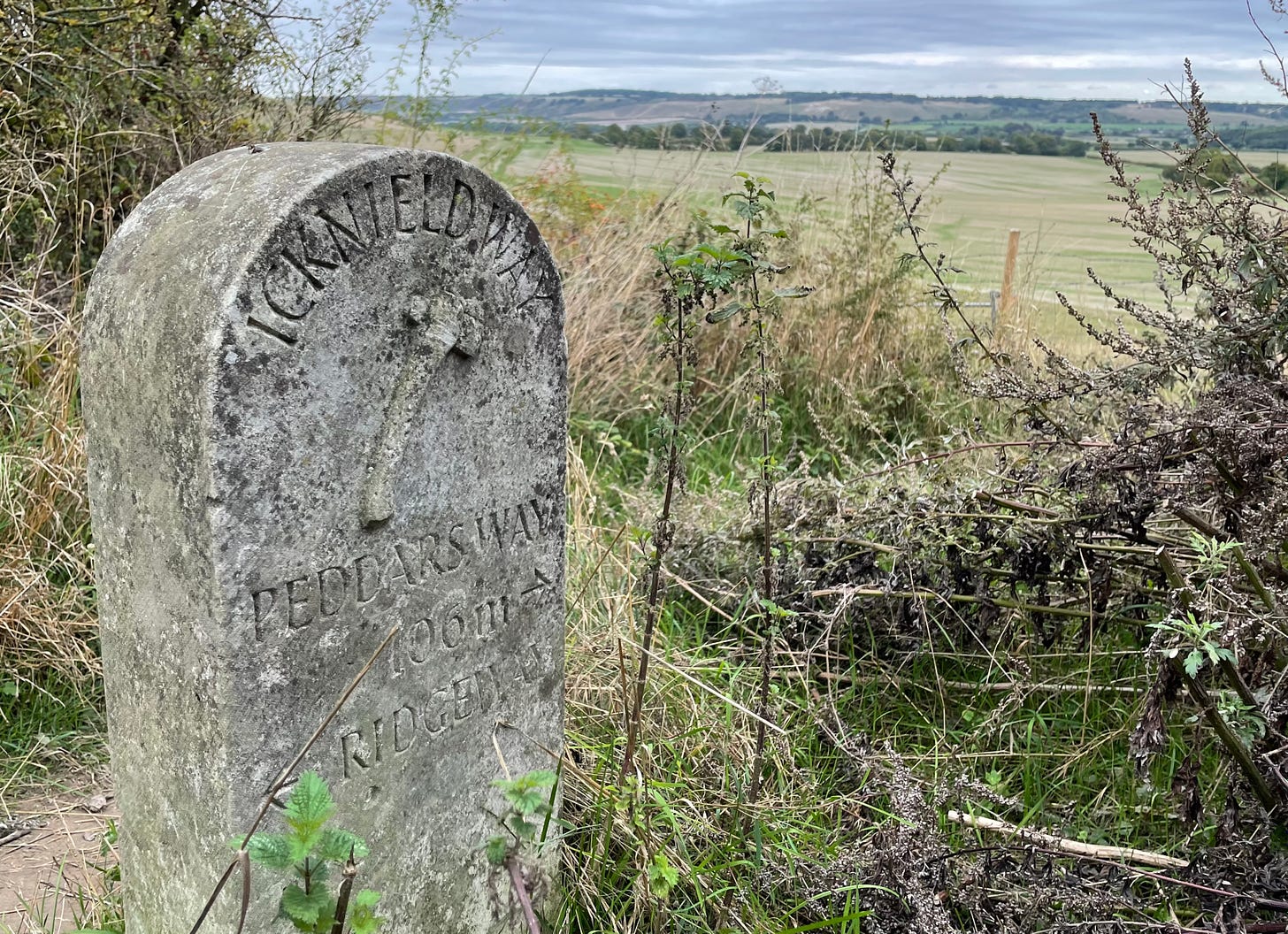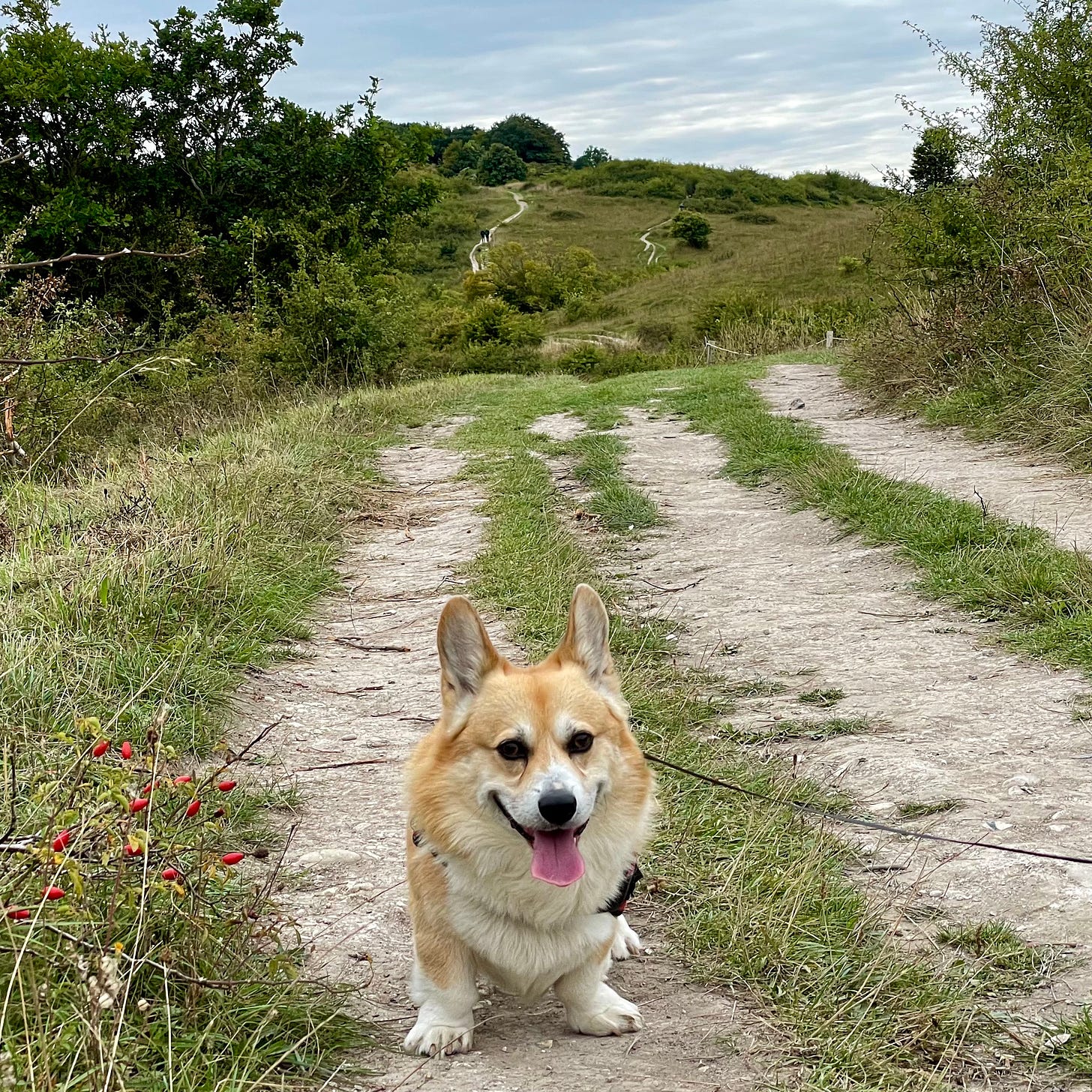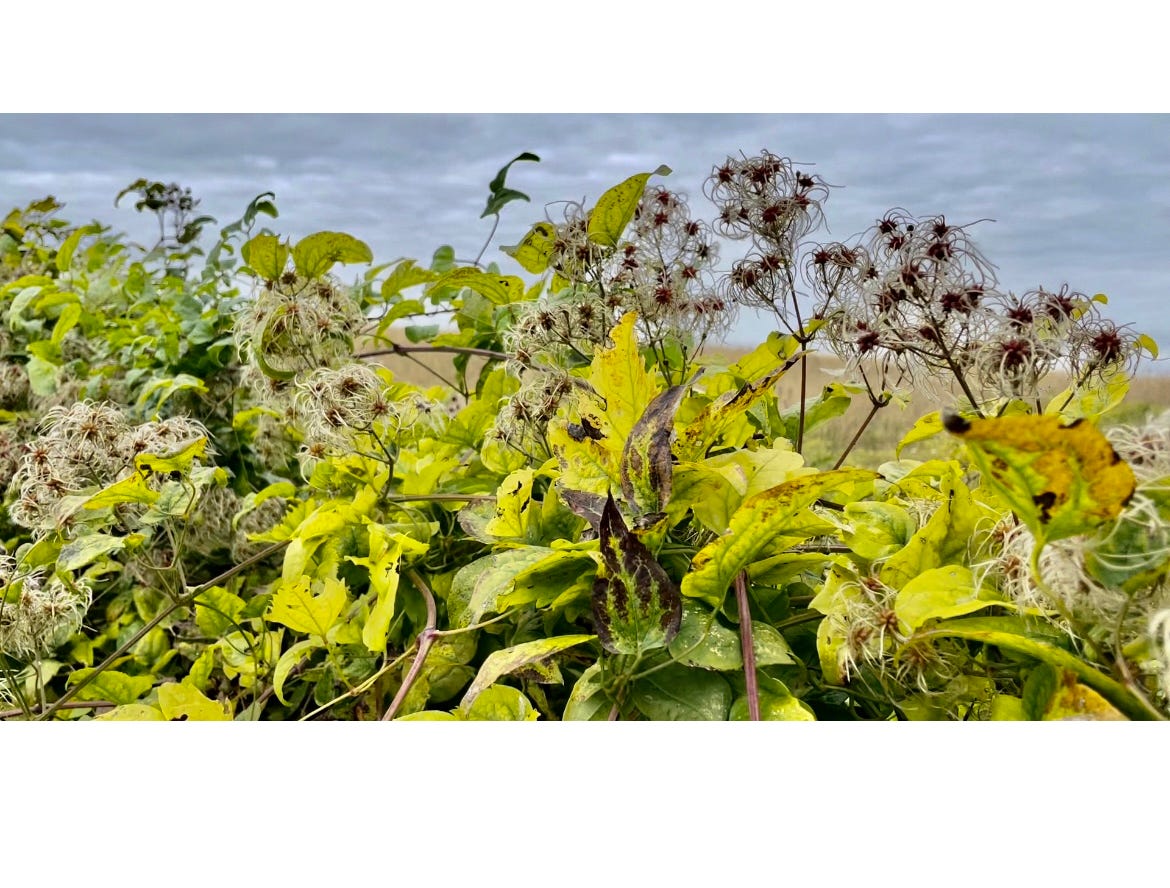Death brings life
Over 32 million watched The Funeral on Monday, claims the BBC. I headed instead to walk one of my favourite routes around an Iron Age hill fort.
It was surprisingly busy; families, dogs, model plane pilots, birdwatchers and bicycles, the mood upbeat and friendly, with hearty greetings and comments about what good fortune it was to see Leo that day!
Old Man’s Beard
Conversations drift across the flint-strewn fields, with interjections from the crows pecking at the hard ground. Parallel tracks of farm machinery green contrasts with the dry, pale brown of the chalk. Heaps of chalk stones reveal fresh badger excavations along the field margins. Their paws and tummies have left trails of chalk powder through the old mans beard that grows everywhere.
Somewhere near these fields is the site of Roman villa and farm, and it’s not unusual to see fragments of tile amongst the flint. Flint and brick frame the local vernacular, both in plentiful supply.
Ivinghoe Beacon
This location has been inhabited since the Bronze Age, the Beacon itself a prominent landmark that offered shelter and protection to the early inhabitants. A strategic hill fort and beacon, visible across the Vale of Aylesbury, north from the Dunstable Downs and possibly a safe haven for travellers along the ancient Ridgeway and Icknield Way. There is a prevailing chilly wind and it must have been pretty miserable before central heating and a sound wind break. Now owned and managed by the National Trust, there is a tenant farmer who works the fields.

At first glance, the fields around Ivinghoe Beacon seem devoid of life, but as I get into my stride, I am happy to see many signs of life, plants, animals and some hardy insects hanging lazily in the air around my face. Some of the dead flower heads are popping with seeds, others empty, burs attach to fur and bootlaces, to begin the cycle in spring. Squabbling starlings on a phone mast rise and form a small murmer overheard.
On this day of national mourning, I have seen all around me signs of ongoing life; dead trees providing shelter and nourishment for so many creatures, the flower husks and their multitudes of seeds, animals and birds and reassuring ongoing use over thousands of years of this beautiful land can only cheer my heart!
Being flexible
This is already my fourth newsletter sharing the local and special micro-seasons from my area: the green space between London and Oxford in the Chiltern Hills. There is a flexible editorial plan for this newsletter, but I like to live dangerously and see what crops up at the weekend before I publish each Wednesday. This is a plan that could fail! If there is anything you would like to know, or read about, then please leave suggestions in the comments section below, I’d be very pleased to hear from you.





I love that stone marker. Is it near the beacon as I do not recall seeing it. Your article reminds me that I am overdue a visit here. (though I do prefer early summer!)